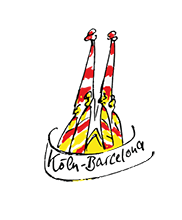KÖLN
Cologne: Facts & Figures
“Cologne has got 1,091,819 inhabitants (4th in Germany) and an area of 40,489 ha . The highest buildings in Cologne are the Colonius Telecommunication Tower (243 m), the Cologne Cathedral (157 m), Axa-Building (155 m), Media Park Köln Tower (148 m), LVR-Tower (103 m). The oldest building is the Ubii monument, built 4/5 AD. The highest elevation is in the Königsforst (118 m), a forest in the east of the city. Its extension is from East to West 27,6 km and from north to south 28,1 km. It has got nine great Municipal districts (Chorweiler, Ehrenfeld, Innenstadt, Kalk, Lindenthal, Mülheim, Nippes, Porz, Rodenkirchen) and 86 quarters, known as „Veedel“ in Cologne dialect.” (Source: Stadt Köln / City of Cologne, Kölner Zahlenspiegel / Cologne Facts & Figures 2020)
Cologne Business
“The largest metropolis in Germany’s most important economic region.”
Cologne has been a city of trade for centuries. Nowadays it has become one of the most important centres for economy, trade and science in central Europe. As for the automotive industry, a memorial has been erected in front of the Deutz railway station to commemorate the invention of the Otto engine (1876). In 1930, the Ford factory was built in Cologne, where the company’s European headquarters still remain. Toyota, Volvo, Citroën, Mazda and Renault have also established sites in Cologne and the surrounding area. The chemical industry as well as several large business groups have also settled in the Rhine metropolis. Cologne is also a leading trade fair and convention centre. The annual programme of events for the Koelnmesse exhibition centre includes more than 50 trade fairs (e.g. Photokina, imm Cologne and Art Cologne) and exhibitions as well as 2000 conventions. The insurance and media sectors are also important to the city.
The University of Cologne is the oldest and one of the largest in Germany. Other academic institutions in the city include the Academy of Media Arts, the Musikhochschule (conservatoire), the German Sport University and the largest University of Applied Science in Germany. Thanks to its public research institutions such as the German Aerospace Centre and its advanced research into bio and gene technology, Cologne is at the forefront of science and research.
Cologne is one of the most important transport hubs in Western Europe with excellent connections via land, sea or air. With its five Rhine ports, Cologne has the second largest inland harbour in Germany. Ten motorways merge in a star-like formation into the motorway ring road that completely circles the city. The newly designed Cologne main station is one of the most important rail hubs in Europe. Cologne-Bonn Airport is the second largest freight terminal in Germany and has also grown in terms of the number of passenger flights offered, not least as a German hub for cheap airlines.
For further news, check the KölnBusiness – Cologne Economic Development Agency website at https://koeln.business/en (versión en castellano: https://koeln.business/es ).
Visit Cologne
Carnival and Cologne Cathedral … of course! For fresh tips and tricks, check the official Köln Tourismus / Cologne Tourism website. You can also take a sneak preview on YouTube, i.e. discover some of Cologne’s neighbourhoods (‘Veedel’ / Viertel)!
- Hipster hotspot: Belgisches Viertel / Belgian Quarter
- Bohème-chic: Südstadt / southern district
- Multicultural: Mühlheim
